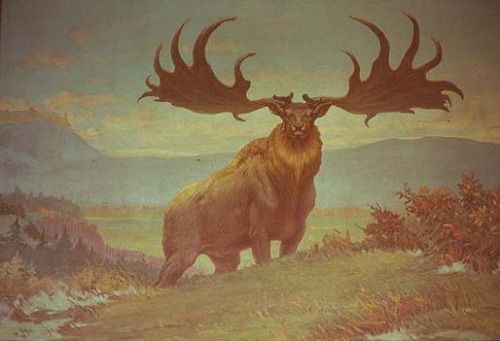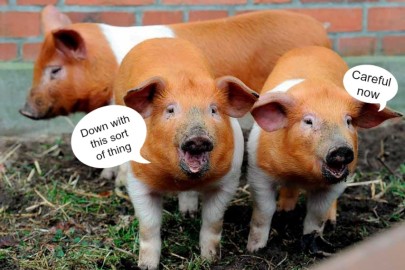
Could this be where trolls really come from? The Wikiworm investigates via another weird Wikipedia article…
Folk memory is a term sometimes used to describe stories, folklore or myths about past events that have passed orally from generation to generation. The events described by the memories may date back hundreds, thousands, or even tens of thousands of years and often have a local significance. They may explain physical features in the local environment, provide reasons for cultural traditions or give etymologies for the names of local places.
- Various Great Flood myths, possibly reflecting a flooding of the Black Sea basin c. 5600 BC
- Landing at Cape York by Willem Janszoon, the discoverer of Australia, 1606
- The occurrence of trolls in Scandinavian folklore, have been suggested as being a collective folk memory of the Neanderthal. A cave which yielded Neanderthal tools has recently been found in Finland.
- Place names have been used to reconstruct the past frequency and distribution of the wolf and beaver in Great Britain, where such species are no longer present.
- Māori legends of a man eating bird, known variously as the Pouakai, Hokioi, or Hakawai are commonly believed to recount Haast’s eagle, a giant predatory bird that went extinct with the moa only 600 years ago. Opposing claims have been made that associate the Hokioi and Hakawai with the extirpated Coenocorypha snipe.
- Mapinguari legends of a giant sloth-like creature that corresponds with the Mylodon, which has been extinct for 10,000 years.
- Legends of the bunyip within Australian Aboriginal mythology have been associated with extinct marsupial megafauna such as Zygomaturus or Palorchestes. When shown fossil remains, Aborigines identify them as those of the bunyip.
- Descriptions of the mihirung paringmal among Western Victorian Aborigines correspond to the extinct giant birds the Dromornithidae.
- A Noongar Aboriginal story from Perth, Western Australia, has been interpreted as referring to the extinct giant monitor lizard Megalania.
- Legends throughout Eurasia describing creatures such as the unicorn may have been based upon Elasmotherium, a rhinoceros-like creature believed to have been extinct for up to 50,000 years.
- The Ebu Gogo myths of the people of Flores have been hypothesised to represent Homo floresiensis, which perhaps became extinct around 10,000 BCE (although the Flores Islanders hold that the Ebu Gogo remained alive 400 years ago).
- An Inuit string figure representing a large creature is identified with the extinct woolly mammoth
- Legends from dozens of Native American tribes have been interpreted by some as indicative of Woolly Mammoth. One example is from the Kaska tribe from northern British Columbia; in 1917 an ethnologist recorded their tradition of: “A very large kind of animal which roamed the country a long time ago. It corresponded somewhat to white men’s pictures of elephants. It was of huge size, in build like an elephant, had tusks, and was hairy. These animals were seen not so very long ago, it is said, generally singly, but none have been seen now for several generations. Indians come across their bones occasionally. The narrator said he and some others, a few years ago, came on a shoulder-blade… as wide as a table (about three feet).” However, the animal in this story was predatory and carnivorous, suggesting the memory of the proboscideans had become conflated with that of other megafauna, such as bears and sabertooths.
Even more so than is ordinary for the study of history, the plausible historical connections listed above could be inaccurate due to the difficulty of piecing together prehistoric or preliterate fragments of evidence into a meaningful understanding. They must rely on more speculation to fill in evidence gaps than would be acceptable in another context that provided more rigorous verifiability of the records available.











Reminds me of the story of wild haggis: the animal with legs shorter on one side than the other, so it can run quickly around mountains – in one direction only. Has anyone seen this curious creature?
Expanding on the theory Susan, there are both left and right short legged haggis, this determines the direction of traverse around the Scottish alps (and, incidentally, the Westminster bar) RLSL haggis hold the Irn-Bru can in the left hand whilst balancing the pie-within-a-roll in the other. Their counterparts do the opposite whilst bleating on about English domination.
As an aside, the maltys are, and indeed have been for thirty years, fully paid up members of the Norwegian troll society (Lillehammer and Hamar branch.) I can thoroughly recommend joining, although the initiation ceremony is somewhat disconcerting, standing on one leg, drinking a litre of Linie Aquavit whilst the chief troll lashes one around the buttocks with a soggy lutofisk as he sings the Finlandia Hymn, thus showing his solidarity with the Helsinki trolls.
sounds like a typical norwegian night out Malty!
And Susan – the germans have a similar wheeze – the ‘wolpertinger’
http://en.wikipedia.org/wiki/Wolpertinger